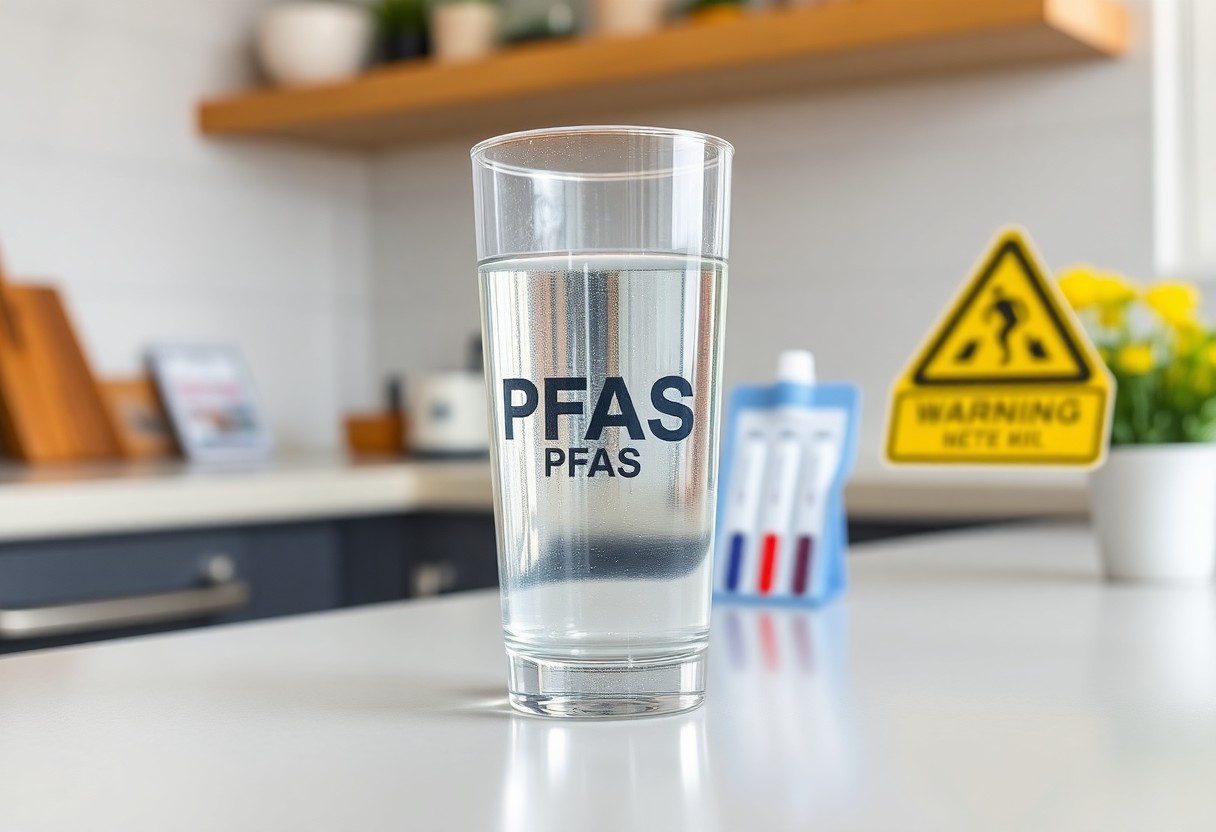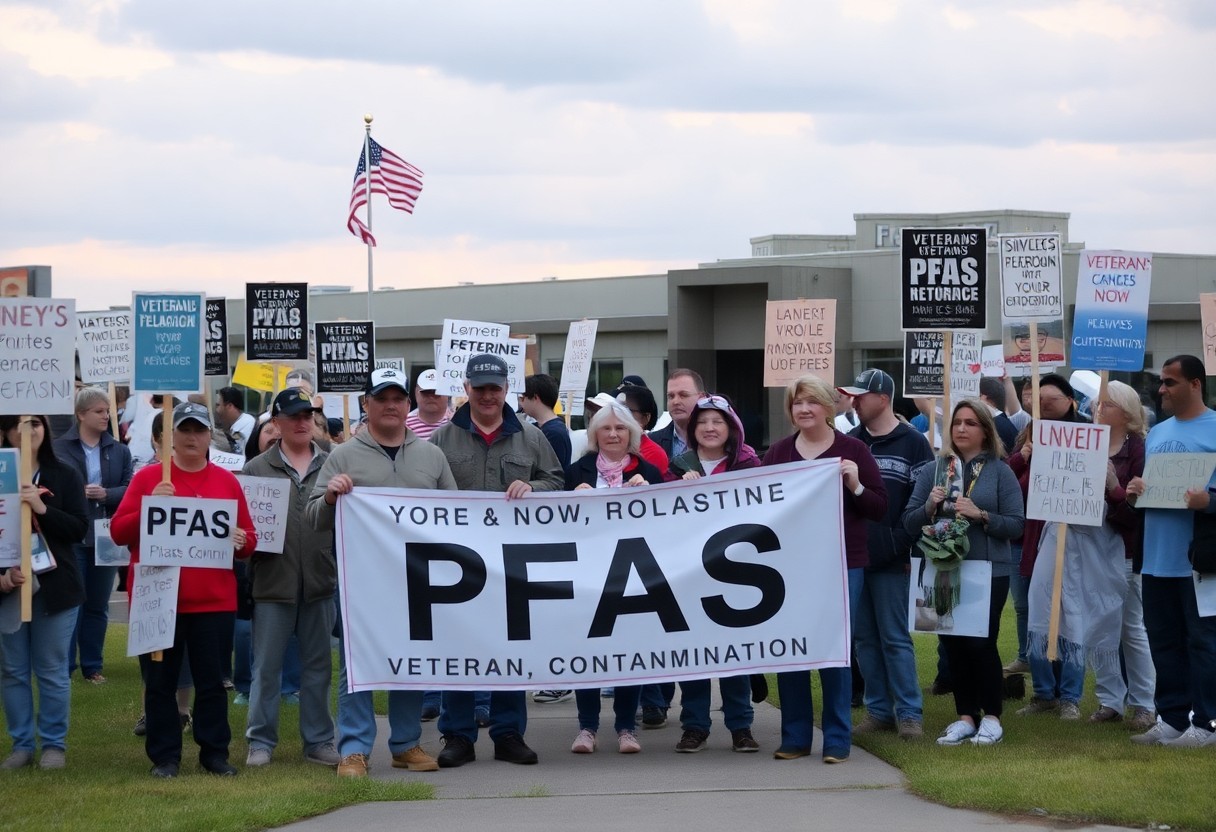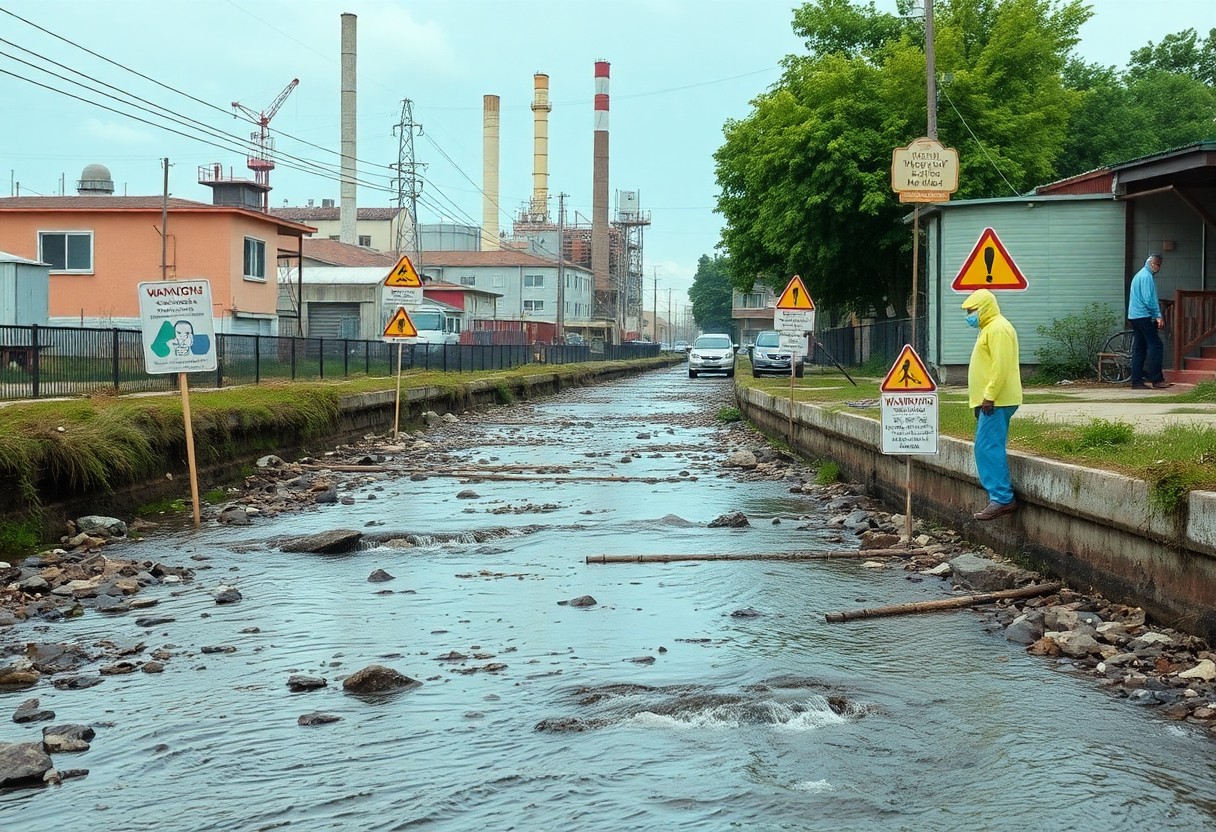Community health is often directly tied to the quality of the water you drink, and the presence of PFAS (per- and polyfluoroalkyl substances) in your water supply poses serious concerns. These chemicals, known for their persistence in the environment and human body, can lead to a host of negative health effects, including increased risks of cancer and hormonal disruption. However, understanding the impact of PFAS can empower you to advocate for better water safety measures in your community, ensuring that access to clean, safe drinking water remains a priority for all residents.
Understanding PFAS
As a group of human-made chemicals, PFAS (per- and polyfluoroalkyl substances) are used for their water- and grease-resistant properties. These substances can persist in the environment and human body for prolonged periods, earning them the nickname “forever chemicals.” Their widespread use in various industries has raised significant health concerns, especially regarding contamination in drinking water.
Definition and Chemical Composition
Before stepping into the implications of PFAS, it’s important to understand their basic definition and chemical structure. PFAS are a class of synthetic chemicals that include thousands of different compounds. Their unique composition features a carbon-fluorine bond, which is incredibly strong, contributing to their stability and resistance to degradation in the environment you live in.
Sources of PFAS Contamination
Against the backdrop of their widespread use, various sources contribute to PFAS contamination in your community. These include manufacturing facilities, wastewater treatment plants, and even household products like non-stick cookware and water-repellent fabrics. Over time, PFAS can leach into the soil and water systems, posing a significant risk to your drinking water quality.
In addition to manufacturing and household products, firefighting foam is a major contributor to PFAS contamination. This foam has been extensively used in training exercises and emergency responses, leading to significant environmental release. Furthermore, landfills play a critical role, as PFAS can leach from consumer products disposed of in these sites. The presence of PFAS in your water can have grave implications for your health, making awareness and action imperative to safeguard your community against these persistent pollutants.
Health Risks Associated with PFAS
Assuming you’re exposed to PFAS through contaminated water, it’s crucial to understand the associated health risks. These synthetic chemicals are linked to a variety of health issues, prompting concern among health professionals and communities alike. The potential for both short-term and long-term effects underscores the importance of water quality in promoting your well-being.
Short-term Health Effects
Between exposure to PFAS and the onset of short-term health effects, you may experience symptoms like skin rashes, fatigue, and gastrointestinal issues. While these effects can sometimes be temporary, they indicate that your body is reacting to these harmful substances, highlighting the need for immediate attention to your water source.
Long-term Health Implications
Risks associated with long-term exposure to PFAS are more concerning and can lead to serious health complications. Research indicates that continuous contact with these chemicals can contribute to significant conditions such as kidney cancer, thyroid disease, and reproductive issues, affecting not just your health but that of future generations.
Consequently, understanding the long-term health implications of PFAS exposure is vital for you and your family. Studies have linked these chemicals with elevated cholesterol levels, weakened immune responses, and complications during pregnancy. By being informed about these potential risks, you can take proactive steps to safeguard your health and advocate for cleaner water resources within your community. Prioritizing your water safety will not only protect you but contribute to a healthier environment for everyone.
PFAS in Drinking Water
If you live in an area where PFAS contamination is prevalent, your drinking water may be affected. These substances, often referred to as “forever chemicals,” can persist in the environment and human body, potentially leading to health risks. It’s imperative to be aware of the presence of PFAS in your water supply and to explore options for purification or alternative sources to mitigate exposure.
Detection and Testing Methods
The detection of PFAS in drinking water typically involves advanced laboratory testing techniques, such as liquid chromatography-tandem mass spectrometry (LC-MS/MS). These sophisticated methods can accurately identify various PFAS compounds at parts per trillion levels, allowing you to assess the safety and quality of your water source.
Regulatory Standards and Guidelines
Methods for regulating PFAS in drinking water are still evolving, as scientific understanding of their health impacts grows. Many communities rely on guidelines set by agencies like the Environmental Protection Agency (EPA), which recommend limits on PFAS concentrations to protect public health. States may impose stricter regulations, requiring monitoring and remediation efforts to ensure safe drinking water.
Understanding the regulatory landscape surrounding PFAS is imperative for you as a consumer. While the EPA currently suggests an interim health advisory level of 70 parts per trillion for certain PFAS, many states are adopting even lower limits in response to emerging research on the potential health impacts, which include reproductive harm and developmental issues. Your local water authority may also have additional measures in place to ensure that your drinking water remains safe, so staying informed about local standards and testing results is vital for your health.
Community Impact and Concerns
Unlike many environmental issues, the presence of PFAS in your water supply can have immediate and long-lasting effects on your community. From health concerns to economic repercussions, the impacts are often widespread, affecting all residents. As awareness grows about these “forever chemicals,” you may find your community grappling with increasing anxiety and demands for action, as well as potential disruptions to local economies and services.
Economic Effects on Communities
To fully grasp the economic consequences of PFAS contamination, you should consider the costs associated with cleaning up contaminated water supplies, healthcare expenses related to exposure-related illnesses, and potential declines in property values. Communities affected by PFAS often face significant financial burdens, which can lead to strained local budgets and reduced public services.
Environmental Justice and Vulnerable Populations
By examining the disparities present in PFAS exposure, it becomes apparent that vulnerable populations—such as low-income communities and communities of color—often bear the brunt of the risks. These communities frequently face higher concentrations of PFAS in their water supplies, exacerbating existing health challenges.
The intersection of environmental justice and PFAS contamination highlights the systemic inequities in your community. As these communities struggle with limited access to resources and healthcare, they are disproportionately affected by the harmful health effects of PFAS, which may include cancers and immune system disorders. It is vital to address these disparities to ensure equitable responses and provide support to those who need it most. Advocating for clean water and community health requires recognizing the voices of the most affected populations and taking action to protect everyone’s right to safe drinking water.

Mitigation Strategies
After identifying PFAS contamination in your water supply, it is vital to implement effective mitigation strategies. These approaches may include investing in advanced filtration systems, promoting stricter regulations on industrial discharges, and encouraging local initiatives aimed at reducing PFAS sources. By taking these steps, you can significantly improve your community’s water quality and protect your health.
Treatment Options for Affected Water Supplies
Affected water supplies can be treated through various methods designed to remove PFAS contaminants. Techniques like activated carbon filtration, reverse osmosis, and ion exchange have shown effectiveness in reducing PFAS levels. Understanding these treatment options empowers you to make informed decisions about the safety of your drinking water.
Community Action and Advocacy
One of the most effective ways to combat PFAS contamination is through community action and advocacy. By uniting with your neighbors, you can raise awareness and demand governmental action to address the issue, ensuring everyone has access to clean, safe water.
But engaging in community action and advocacy is not just about raising awareness; it’s about fostering a strong network of individuals committed to change. You can participate in local meetings or become involved in organizations focused on environmental health. By collaborating with advocacy groups, you gain access to valuable resources and insights on effective strategies to combat PFAS contamination. Your voice matters, and together, you can push for policy changes that hold manufacturers accountable and promote cleaner water sources for all.
Future Research and Developments
For communities grappling with PFAS contamination, ongoing research is vital for understanding its long-term effects and finding effective solutions. Future studies will focus on developing better detection methods and exploring new remediation techniques to mitigate the presence of these harmful substances in water supplies, ultimately promoting healthier environments for you and your neighbors.
Ongoing Studies on PFAS Effects
Across various research institutions, scientists are conducting comprehensive studies to evaluate the effects of PFAS on human health and ecosystems. These investigations aim to uncover potential links between PFAS exposure and serious health issues, equipping you with the knowledge to advocate for appropriate safety measures and policies in your community.
Innovations in Water Treatment Technologies
Effects of PFAS contamination have sparked the development of novel water treatment technologies designed to remove these persistent chemicals. With a focus on enhancing adsorption techniques and advanced membrane filtration systems, engineers and researchers are actively seeking methods that can efficiently eliminate PFAS from drinking water. These innovations hold the potential to protect your health while ensuring safe access to clean water. Continuous investment in research and collaboration among stakeholders are key to bringing these technologies to fruition.
Final Words
Considering all points, understanding the presence of PFAS in your water is vital for the health and safety of your community. These chemicals can pose significant risks, influencing not just individual well-being but also public health overall. By staying informed and advocating for clean water initiatives, you can contribute to the safety of your environment. Your awareness and action can help ensure that your community has access to safe drinking water, making a positive impact for current and future generations.




















